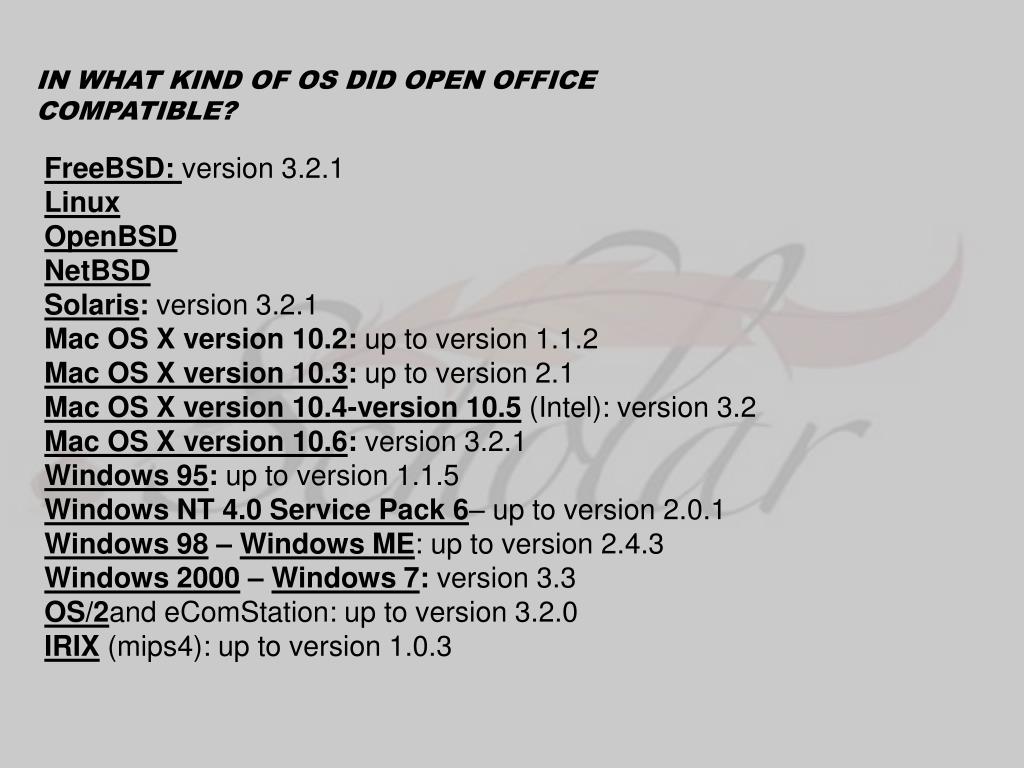
For the most part, things looked fine in NeoOffice - a few elements might not be aligned properly, or there may have been other cosmetic issues, but the documents were usable in NeoOffice. In addition to writing a few letters using NeoOffice, I tried it out using some Microsoft Word documents I’ve received from PR folks over the years. If you’ve used 1.x, then you’ll feel right at home using NeoOffice. For all intents and purposes, I didn’t see any difference between NeoOffice Writer and Writer in the 1.x versions of. It will probably take you longer to download NeoOffice than it will to install it.Īfter the installation, I fired up NeoOffice and started by testing out Writer. Not quite as simple as “drag the icon to the Application folder,” which is used by, but simple enough. Once you download and mount the NeoOffice disk image, you only need to double-click on the NeoOffice package (.pkg) file and walk through the steps to install it. NeoOffice installation is typical of other software on Mac OS X. I installed NeoOffice on a 1.8GHz G5 iMac with 1GB of RAM running Mac OS X 10.4.5. NeoOffice builds do not run natively on Apple’s Intel-based Macs, though the project is projecting an alpha build for Intel-based Macs sometime this summer. The minimum requirements for NeoOffice are Mac OS X 10.3, 256MB of RAM, and at least 400MB of free disk space. ’s fonts look jagged and a bit clunky - a reminder of the bad old days before Linux had decent font support. Copy and paste works, but only if you manually copy and paste the text - with NeoOffice, you can simply highlight text in another application (say, Firefox) and drag it to an open document.įonts look much better in NeoOffice than in out of the box, because NeoOffice enjoys native support for Mac OS X fonts. Why not ? The project does provide a build for OS X, but it’s dependent on X11, doesn’t support copy and paste from other applications the way that NeoOffice does, and generally isn’t as well integrated into Mac OS X.įor example, menus (File, Edit, etc.) are located within the application windows, whereas NeoOffice supports the traditional Mac OS X design and uses the traditional Mac menu bar at the top of the screen. NeoOffice isn’t perfect, but it’s a great alternative for Mac users who don’t want to shell out big bucks for Microsoft Office, and want a suite that’s more full-featured than Apple’s iWork.


I decided to kick the tires a bit and see how well it performs.

Developers Patrick Luby and Edward Peterlin released NeoOffice 1.2, a port of 1.1.5 to Mac OS X, in early February.


 0 kommentar(er)
0 kommentar(er)
